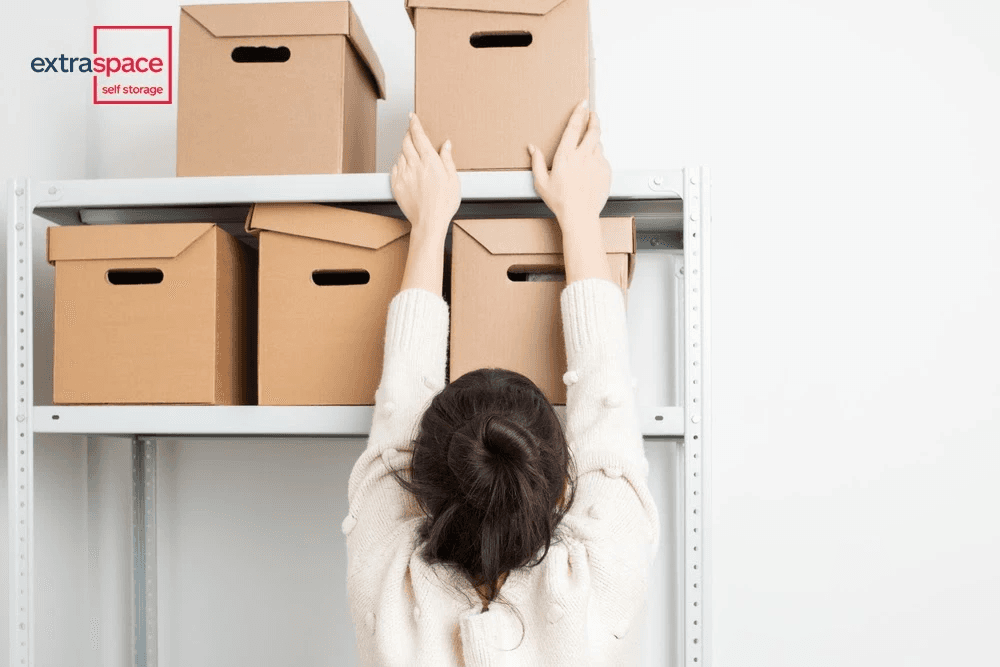Oct 25, 2024
We all have reasons for packing and moving furniture. Whether you’re downsizing, renovating, or simply needing extra space, long-term storage of furniture can be a smart solution. It’s perfect for high-quality furniture you’re saving for future use or cherished valuables that still hold sentimental value.
Furniture can survive for many years in the appropriate conditions, but it might suffer from moisture, temperature changes, or physical deterioration if poorly kept, even for a brief duration. Simply put, while storing furniture for an extended period of time, the danger of damage increases significantly, and special care must be taken to protect the safety of your precious items. You’ll greatly benefit from looking into climate-controlled storage units.
Don’t know how to keep your furniture safe in storage? Here are some long-term furniture packing and storage strategies from our team to keep your valuable possessions safe and secure.
Clean Your Furniture Properly
The first step in storing your furniture in a self-storage unit is to prepare it. This begins with disinfecting the furniture and giving it a good scrub. Use mild soap and solution to get rid of the stains. Always gently wipe off the damp surface to avoid any problems with mould, especially with wooden furniture. Give each item a deep clean with a fresh cloth, and fix any damage to prevent cracks and breaks from spreading.
When dealing with fabric and leather furniture, be sure to use the right cleaning tools to avoid any damage. These will include vacuums, fabric solutions, and leather cleaners. Using the right cleaning materials will help keep your furniture looking as good as new.
After cleaning, place your furniture in a well-ventilated area to dry thoroughly before packing it. It will prevent any spots of retained moisture from causing damage, discolouration, or mould buildup over time.
Dismantle Heavy Items
Most pieces of furniture can be disassembled and dismantled, which makes moving, packing, and storing them far easier. Disassembling large and heavy furniture such as tables, beds, and cabinets frees up more space in your store unit. This helps you organise and store more items effectively. Additionally, you’ll also be able to keep delicate furniture from the risk of damage.
However, be careful when dismantling your furniture. Make sure to keep all screws, nuts, bolts, and small parts organised and securely stored, ideally in labelled bags. You’ll need these small parts to assemble your furniture, and having them in an organised place will make it easier for you. This maintains the quality of your furniture and its longevity for long-term storage.
Provide Protective Coverings
Now that you’ve cleaned and dismantled your furniture, it’s time to make sure they’re all secured properly. Wrap fragile objects in bubble wrap and cover heavier pieces of furniture with blankets to protect them. This cushioning provides extra protection against accidental bumps that might happen while your furniture is being transported or stored.
For larger and heavier furniture, use thick and breathable furniture coverings to prevent scratches and dents from happening while in storage. Although many experts recommend wrapping furniture with plastic, you should avoid doing so whenever feasible. Certain items, such as wood and textiles, might be suffocated by plastic wrapping, resulting in moisture and unpleasant odors forming in your storage units.
Label Your Items
Once your furniture is wrapped and prepared for storage, it’s important to label your items so you won’t have any trouble identifying your furniture. This way, you can easily identify your furniture without having to unwrap them.
Along with this, it’s a good idea to make a detailed list of all the items you are planning to store so you can quickly check when the movers complete their job. This also helps you keep track of the items in your storage unit so you can easily know what’s in there. To make things more convenient, try to include specific details about the furniture you have listed. This will make it easier for you to find things in your storage unit when the time comes.
Choose A Climate-Controlled Storage Space
Inconsistent weather and humidity levels can severely damage your items, especially if it causes mould and mildew to grow. The high humidity levels can lead to warping, which will change the quality of your furniture and create cracks. For long-term storage, it’s especially important to consider a climate-controlled storage unit to protect your valuable belongings.
Climate-controlled storage keeps the unit at a consistent temperature to mitigate the impact of excessive temperature changes. By doing so, you can store your furniture for long periods of time without having to worry about temperature-related damages. These self-storage containers would be your best option for long-term furniture storage.
Plan Your Storage Smartly
Before moving your items to the storage unit, it’s important to create a detailed plan on how you’re going to proceed. Take note of your storage unit’s size and the possible layout options you create. To help you get started, a general rule of thumb would be to place the items you won’t need in the near future in the back. This can also include heavier and larger items.
Generally, we recommend vertically storing your items. Bigger and sturdier items, such as cabinets and drawers, would be at the bottom, followed by smaller stacks of boxes. It will also help to create aisles to give you access to items at the back without moving a lot of stuff. The goal is to make your belongings reachable without the risk of causing accidental damage.
Having a good storage plan allows you to easily store your items while still allowing air to circulate freely, protecting your furniture from breakage
Conclusion

When it comes to storing furniture long-term, careful planning and preparation are essential. From proper cleaning to strategic layout planning, every little detail counts to protect your furniture from potential damage and deterioration. While it might seem challenging, following our tips can make the whole process less overwhelming and easier.
If you need extra help, feel free to contact us. Extra Space is here to provide comprehensive solutions for all your personal and business storage needs!


